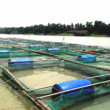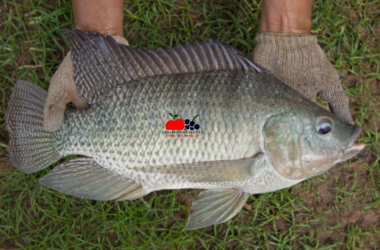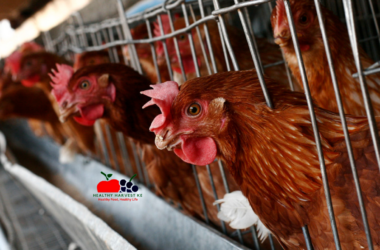Kenya’s aquaculture sector is experiencing remarkable growth, with production reaching an impressive 28,898 metric tons in 2022. As more farmers venture into fish farming, one question remains paramount: what should you feed your fish in Kenya? Whether you’re raising tilapia in Western Kenya, catfish in the Rift Valley, or exploring options along the Coast, choosing the right feed is critical to your success.
The truth is, feed constitutes over 50% of fish farming production costs, making it the single most significant factor affecting profitability. With the right feeding strategy, you can dramatically improve growth rates, survival, and ultimately, your bottom line.
In this comprehensive guide, we’ll explore everything from commercial fish feeds manufactured in Kenya to cost-effective homemade alternatives, helping you make informed decisions for your aquaculture venture.
Commercial Fish Feed Options in Kenya
Kenya’s fish feed industry has evolved significantly in recent years, with several manufacturers now producing high-quality feeds locally. These manufacturers have invested in modern technology to create feeds that meet international standards.
Major Fish Feed Manufacturers
Sigma Feeds Limited has established itself as a prominent player in Kenya’s aquaculture sector, producing specialized fish feeds designed specifically for the Kenyan market and East African region. Their product range includes carefully formulated feeds for different stages of fish development, ensuring optimal nutrition throughout the growth cycle.
A game-changing development occurred in March 2024 when Unga Holdings Ltd opened a state-of-the-art fish feed factory in Nairobi. This impressive facility can produce 5,000 tons of high-quality extruded floating fish feed annually, addressing what has long been considered the biggest obstacle to aquaculture growth in the region – access to high-quality floating feeds.
Unga Holdings, a joint venture between Unga Group Ltd and US-based Seaboard Corporation, developed this factory as part of the Dutch Public Private Partnership FoodTechAfrica. This collaboration has been working to develop the entire aquaculture value chain in East Africa since 2013.
Types of Commercial Fish Feeds Available
The commercial fish feeds available in Kenya are specifically formulated to meet the nutritional requirements of commonly farmed species, particularly tilapia and catfish. These feeds vary in their composition and physical characteristics based on the growth stage of the fish.
Sigma Feeds offers a range of products including:
- Starter Crumbled feed (0.5mm and 1mm) with 40% crude protein for fish weighing 0.5-10 grams
- Starter 2mm feed with 30% crude protein for fish weighing 10-60 grams
- Grower 3mm feed with 30% crude protein for fish weighing 60-250 grams
Similarly, Unga Group PLC offers their “Fugo Fish” product line, which includes varieties for different species and growth stages:
- Catfish Finisher
- Catfish Grower
- Catfish Pre-grower
- Tilapia Grower
- Tilapia High Pro Finisher
- Tilapia Low Pro Finisher
- Tilapia Pre-Grower
- Tilapia Starter Extruded Crumble

Understanding Fish Feed Technology and Quality
Modern fish feeds in Kenya employ advanced production technologies that significantly enhance performance and efficiency. One of the most important technological advances is micro-extrusion, which creates particles with better stability and reduced nutrient leaching into the water.
Floating vs. Sinking Pellets
Most quality commercial feeds in Kenya are designed as floating pellets, which offer several distinct advantages:
- Easier monitoring of feed consumption
- Reduced feed wastage
- Better feed conversion ratios
- Improved water quality (less uneaten feed decomposing at the bottom)
Floating feeds allow farmers to observe feeding behavior, adjust feeding rates accordingly, and maintain better water quality in their systems. For small-scale farmers, this visual feedback is invaluable for managing feed costs and ensuring optimal growth.
Nutritional Requirements for Different Fish Species
Different fish species and growth stages require specific nutritional compositions. Understanding these requirements is essential for successful fish farming in Kenya.
For Tilapia: Tilapia are primarily herbivorous/omnivorous and generally require:
- Starter feeds: 35-40% protein
- Grower feeds: 28-32% protein
- Finisher feeds: 25-28% protein
For Catfish: Catfish are omnivorous with carnivorous tendencies and typically require:
- Starter feeds: 40-45% protein
- Grower feeds: 35-38% protein
- Finisher feeds: 30-32% protein
Recommended Feeding Practices
Proper feeding management is just as important as the feed itself. Here are the recommended practices based on fish weight and developmental stage:
Feeding Frequency and Amounts
Sigma Feeds recommends the following feeding schedules:
- For fish weighing 0.5-3 grams: 6-10% of body weight, 6 times daily using 0.5mm starter feed
- For fish weighing 3-10 grams: 6-10% of body weight, 6 times daily using 1mm starter feed
- For fish weighing 10-60 grams: 6-7% of body weight, 4 times daily using 2mm starter feed
- For fish weighing 60-250 grams: 2.5-4% of body weight, 3 times daily using 3mm grower feed
These specialized feeds are formulated to ensure protein is used efficiently through highly available amino acids and precisely balanced energy sources, resulting in faster growth that is maintained throughout the production cycle.
Homemade Fish Feed Alternatives
With commercial feed comprising over 50% of production costs, many small-scale fish farmers in Kenya are exploring more affordable homemade alternatives. While these may not match the performance of high-quality commercial feeds, they can provide a cost-effective solution when used properly.
Basic Homemade Fish Feed Ingredients
The following locally available ingredients can be used to create homemade fish feeds in Kenya:
| Ingredient | Protein Content | Function |
|---|---|---|
| Fish meal | 50-65% | High-quality protein source |
| Soybean meal | 44-48% | Plant protein source |
| Maize/corn meal | 8-10% | Energy source |
| Wheat bran | 15-17% | Fiber and energy |
| Rice bran | 12-15% | Energy and some protein |
| Cassava flour | 1-2% | Binding agent and energy |
| Blood meal | 80-85% | High-quality protein |
| Sunflower cake | 28-32% | Plant protein |
Simple Homemade Fish Feed Formula
Here’s a basic formulation for tilapia feed that can be made at home:
- Fish meal or blood meal: 25%
- Soybean meal (toasted): 25%
- Maize meal: 20%
- Wheat bran: 15%
- Rice bran: 10%
- Cassava flour (for binding): 4%
- Vitamin and mineral premix: 1%
The ingredients should be ground finely, mixed thoroughly, and moistened to form a paste. This paste can then be pressed through a meat grinder or similar device to create pellets that are then dried in the sun.
Supplementary Feeding Options
In addition to formulated feeds, Kenyan fish farmers can utilize various supplementary feeds:
For Tilapia:
- Kitchen scraps (vegetable peelings, food leftovers)
- Azolla (a water fern high in protein)
- Duckweed
- Compost
For Catfish:
- Earthworms
- Insect larvae
- Kitchen scraps
- Small fish/fish offal
These supplementary feeds can help reduce costs but should ideally be used alongside a balanced base feed to ensure complete nutrition.

Challenges in Kenya’s Fish Feed Industry
Despite recent advancements, Kenya’s fish feed industry faces several significant challenges that impact development and efficiency.
Raw Material Availability and Cost Issues
One of the primary challenges is the high cost of input materials. Kenya relies heavily on imported raw materials for feed production, which significantly increases production costs. The dependency on imports makes the industry vulnerable to global price fluctuations and supply chain disruptions.
With feed constituting over 50% of total production costs in aquaculture, this is a critical factor affecting the overall profitability of fish farming operations. The high cost of feed directly impacts the final price of fish products, affecting both producers and consumers.
Quality Control and Standardization Challenges
The fish feed industry in Kenya also struggles with inconsistent feed quality and nutrient composition. This inconsistency can lead to suboptimal fish growth, health issues, and reduced productivity for farmers.
Limited availability of high-quality feed ingredients further compounds this problem, as manufacturers may be forced to compromise on quality when preferred ingredients are scarce or prohibitively expensive.
Government Interventions and Support
The Kenyan government has implemented several interventions aimed at addressing challenges in the animal feed sector, including fish feed.
Tax Policies and Their Effects
To reduce feed costs, the government has implemented several tax relief measures:
- In 2018, a 16% value-added tax on animal feeds was removed
- In 2021, import duty on key imported raw materials used in the manufacture of animal feeds was eliminated
- In 2023, the government zero-rated all imported raw materials for manufacturing animal feeds
Despite these interventions, animal feed prices have continued to rise, driving up the cost of animal products including fish. This suggests that tax policies alone may not be sufficient to address the complex challenges facing the industry.
Regulatory Framework
On February 6, 2025, the Competition Authority of Kenya (CAK) published its report on the Animal Feed Market Inquiry, highlighting several anti-competitive practices within the animal feed sector. The report emphasized the need for entities in the sector to align their internal and external arrangements and contracts to eliminate anti-competitive practices.
Following this inquiry, increased monitoring of the animal feed sector is expected, including more investigations into animal feed producers, enhanced collaboration with regional and governmental regulators, and intervention where anti-competitive practices occur.
The Future of Fish Feed in Kenya
The future of the fish feed industry in Kenya holds significant potential for growth and improvement, particularly as aquaculture continues to develop as an important source of protein and livelihoods.
Innovations in Feed Technology
Research efforts are focused on developing new feed formulations using locally available ingredients, such as agricultural by-products and aquatic macrophytes, to create cost-effective and nutritionally balanced feed formulations. These initiatives aim to reduce dependency on imported ingredients and lower production costs.
Work is also underway to optimize feed processing techniques, including extrusion, pelleting, and encapsulation, to improve feed quality, stability, and digestibility. These technological improvements can enhance feed performance while potentially reducing costs.
Sustainable Practices
As the industry grows, sustainability becomes increasingly important. Future development should focus on:
- Minimizing environmental impacts of feed production and usage
- Developing eco-friendly feed formulations that reduce water pollution
- Implementing resource-efficient production processes
- Creating circular economy approaches where by-products from other industries can be utilized in fish feed
Conclusion
Kenya’s fish feed industry is at a critical juncture, with recent developments in local production capacity representing significant progress toward addressing longstanding challenges. The establishment of modern production facilities, such as the Unga Holdings fish feed factory, demonstrates the potential for technological advancement and international collaboration to drive industry growth.
For fish farmers in Kenya, understanding what to feed your fish is essential for success. Whether you choose commercial feeds from established manufacturers like Sigma Feeds and Unga Group, or develop your own homemade alternatives, the key is ensuring your fish receive balanced nutrition appropriate for their species and growth stage.
As Kenya’s aquaculture sector continues to grow to meet the increasing demand for fish protein, the evolution of the fish feed industry will play a pivotal role in determining overall success. By addressing current challenges through innovation, collaboration, and supportive policies, Kenya can build a more sustainable and productive fish feed industry that supports aquaculture growth while providing economic opportunities throughout the value chain.
Are you a fish farmer in Kenya? What feeding challenges have you encountered, and what solutions have worked best for you? Share your experiences in the comments below!
Additional Resources
For more information about fish farming in Kenya, visit Greenlife Kenya Aquaculture or check out the comprehensive fish feed products from Sigma Feeds.










